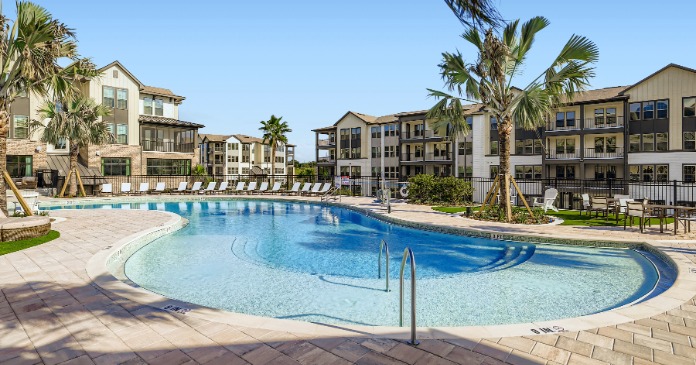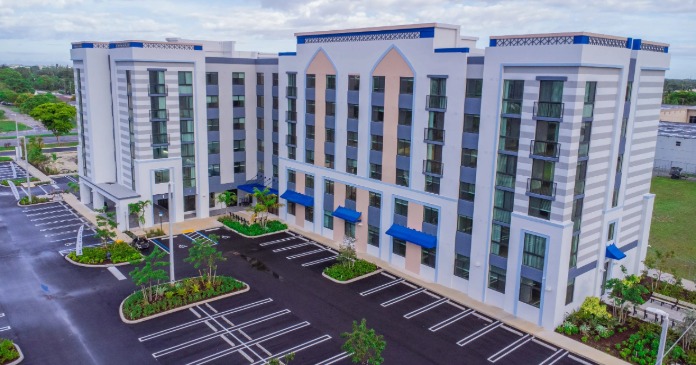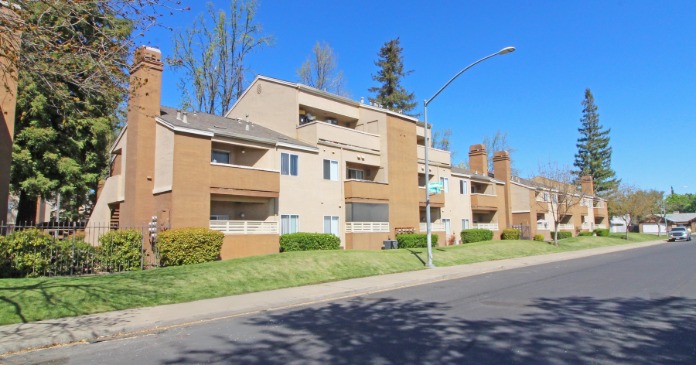Yield PRO TV presents NAHB Power Hitters. Host Linda Hoffman talks with Tommy Brunson, president of development and construction for Fairfield.
Transcript: NAHB Power Hitters interview. Linda Hoffman with Tommy Brunson, recorded August 30, 2022
(music)
Linda Hoffman: Alas. The free ride is coming to an end. Maybe this will refocus the quiet quitters. It could nudge the uninspired back into the workforce… or maybe not. The last of the eviction moratoriums and rent relief programs are ending. While there’s never a painless time to roll back subsidies—rising inflation, an economy teetering on recession and a mounting energy crisis will all certainly leave a mark on the already heavily impacted rental business.
Eight-point-five million people are behind on their rent according to Census Bureau data. Over half of those expect to be evicted in the next months. This—even as the nation sinks ever deeper into a housing shortage that has doubled in less than a decade by some reports.
This is where businesses, the real experts in the field, rely on the truths they live and breathe every day. Those truths are informed by the lessons of supply and demand, profitability, and respect for those who helped get you to the top. Americans, WELL we’re anchored by family, home and country. They are the foundations of our social fabric and the source of our prosperity. Still the question looms large: How can a housing market be saved?—a question asked by economist Thomas Sowell in 2011.
Today we speak to someone at the center of it all. Tommy Brunson is president of development and construction with Fairfield Residential. Fairfield is one of the nation’s top 50 apartment owners and a key player in the nation’s battle for more housing.
Tommy, it is great to have you on the show.
Tommy Brunson: Linda, thank you so much. It’s great to be with you. And thank you for what you do for our industry. I always enjoy these interviews and opportunities to learn from my peers. And so really appreciate the opportunity to be with you here today.
Linda Hoffman: So, tell us about yourself, Tommy, and Fairfield Residential.
Tommy Brunson: Sure, so Fairfield Residential is a full-service, multifamily real estate operating company. We’ve been in a business for over 37 years now, and own and manage approximately 40,000 units across the country and that represents about a little over $10 billion in assets under management. And we’re really active in two main business lines: the acquisition of existing communities, as well as ground-up new construction of multifamily homes across all different product types in 30 different markets around the country.
I’ve been the firm about 15 years—you can tell by my accent I’m a native Southerner. I live in Southern California where we’re headquartered for the last three years and I really enjoy the opportunity to oversee our new construction platform here.
Linda Hoffman: Fairfield operates on the east and west coasts, plus Texas and Colorado. California, Seattle and Portland are especially known as difficult environments for business. You have over one third of your properties there. Why not high-growth states like Tennessee, Idaho and Utah?
Tommy Brunson: Oh sure, yeah, great question. It’s been amazing to watch those states’ growth, really, since the pandemic and beyond, really having a lot of growth happen—began to have—even before the pandemic started. But as I mentioned we are in 30 markets around the country and historically we had a bent towards more supply constrained, or difficult-to-develop markets. Although I’ll tell you, our position on that is changing. You’re going to see us come back into markets this year including Denver, Colorado—where we will have two starts this year. As well as next year, you’ll see us back into Phoenix, Arizona, and Charlotte, North Carolina.
And so I would say we’re not ruling out the Salt Lake Citys and the Nashvilles. We’ve got developers actively working to look for sites in those markets and… It’s just about trying to find the right entry point, right? There’s been a lot of supply. Certainly, with costs escalating right now it makes it more of a challenge to develop in those markets.
We had a site under contract in Boise, Idaho, and frankly, with the amount of growth there and the inflation that we were seeing, we just couldn’t make the project pencil So, but I hope that the next time that I’m back with you to talk again, we’ll probably have a waiting list in those markets.
Linda Hoffman: Local permitting is a major issue for developers. How has the entitlement process changed during your time in the business?
Tommy Brunson: Yes. So, certainly, you know, it’s always locally driven in terms of how entitlements work, right? But, I think the thing that I’ve seen the most over, you know, the 25 years I’ve been in the business overall, is cities have gotten more sophisticated in terms of what they are requiring from developers today. And that’s really driving up the cost of development, the amount of pursued cost and predevelopment capital that developers have to expend, really, before we ever know whether a project is going to be feasible or not.
It seems to be adding costs in time to our development projects. And ultimately, unfortunately, the cost of that gets borne by the resident, when they move into the communities and it drives up the cost of housing. I think if we can find a way to shorten those entitlement time frames there will be an opportunity for us to solve this housing crisis in a much bigger fashion.
Linda Hoffman: Thank you for reminding us of that. What is the toughest market to develop in and why?
Tommy Brunson: Well, there are lots of tough markets out there, but I think for us, of all the markets we’re in around the country, probably the Bay Area in Northern California is the most difficult for us. You have really expensive land prices. You’ve got a very difficult entitlement process with many NIMBYs out there who do not want to see multifamily development come into their communities. You’ve got a very difficult subcontractor base, which leads to higher costs and then, ultimately, right now, especially coming out of the pandemic, we’ve seen the operating fundamentals in the Bay Area underperform, you know, many of the other markets in the country and that’s made it just very difficult for us to develop.
So, you know, we hope that the fundamentals will turn around here in the next 18 to 24 months, but, in the meantime I would say, for sure, the Bay Area’s the toughest for Fairfield.
Linda Hoffman: Hope springs eternal. Everyone’s talking about it and so must I. Materials costs are crazy. Prices are highly volatile, and availability is uncertain. How can you possibly judge with any certainty that a project makes financial sense in such volatility?
Tommy Brunson: Yeah, Linda, I wish I had a silver bullet on that. I really don’t. It has been a challenge for us, as well as many of our other peers in the marketplace today. You know, what we are really trying to do at Fairfield, is try to make sure that we’re building in inflation into our construction cost budgets today at the very beginning of the project, when we first put it under contract. And then, we’re constantly monitoring the actual inflation rates that are happening across the country and try to compare that back to our underwriting. But it is a challenge for us every day and we self-perform as a general contractor, so our people are on the front lines trying to combat this issue on a daily basis.
You know, the biggest thing that I can do is just try to encourage our teams to procure materials early. Don’t wait around on things like windows and doors. You know, we need to get those orders in as soon as we close on the construction because it has been a very difficult time with the supply chain and cost pressures continually hamper our business. So, it’s a problem that we don’t see going away in the short-term, but I do hope that we’re going to be able to reign that in. The moves that the Federal Reserve is undertaking now—I think we’ll all be much happier in the future if we can bring this inflationary cost down.
Linda Hoffman: Do you expect the recent slowdown in single-family starts to ease conditions for multifamily builders and, if so, when?
Tommy Brunson: Great question. Yes. I do think, you know, our department’s position is we’re going to continue to see high occupancies in our, in the multifamily space because, candidly, we don’t have enough supply out there to house Americans. We do expect to see rent growth to slow over time as inflationary pressures and other things, like gasoline and food prices, continue to put pressure on renters’ wallets. And so, I think we’ll see rent growth moderate.
But hopefully the slowdown in single-family construction, while disappointing for our single-family peers in the industry, hopefully that will benefit us and that will allow costs to begin to moderate. But overall, we need to provide more housing in this country, both on the for-sale side, as well as the for-rent side, in order to be able to house everyone the way that we should be housing America.
Linda Hoffman: ESG has been rising in importance, Tommy, although not without controversy. Fairfield launched its ESG initiative in 2021. How has this impacted the way you design, develop and construct your properties and how does it play in today’s market?
Tommy Brunson: Yes, Linda, ESG is important here at Fairfield and we are focused on that as a company. Really, I’ll point you to two things. On the environmental side, I think from the development perspective, we have always been sensitive to what our investment partners want in terms of environmental sustainability. We have done all different types of LEED certified projects. Certainly, the restrictions here in California are higher here than any of the other states. And we pride ourselves on the ability to deliver environmental solutions that will tailor to the needs of our investment partners.
And in terms of the social part of ESG, the biggest thing that I can point to that we’re doing here at Fairfield is our focus on affordable housing. Over a third of our portfolio is dedicated towards LIHTC communities. Almost 16,000 units now, out of our 40,000 units are dedicated to projects that we intend to maintain and keep that affordability in place. That is a high growth area for us as a company and, really, that’s one of the main things I can do to point to our focus on, not only taking care of the environment, but also taking care of the residents that live in those communities and promise them that we will maintain that affordability for many, many years to come.
Linda Hoffman: Corporate managers are traditionally tasked with value creation in the way of profitability and returns for owners. How does ESG benefit owners short and long term?
Tommy Brunson: Right. From an environmental standpoint, hopefully, the sustainability measures that we’re putting in place today will pay off for us tomorrow. In addition to that, I think it’s important that we focus, not only on the residents that live in our communities as I mentioned earlier with our affordable program, but I think it’s also just as important to care about your employees. And we pay particular focus on that from a training and development perspective.
We do have a DE and I committee here at Fairfield whose very focused on our employee base overall and ultimately, you know, we’ve been in business for over 35 years now. Our intention is to maintain ourselves as a growing concern for the foreseeable future and in order to do that we need to have the right leadership here to be able to sustain us and the future to come.
So, I think it’s a key, it’s a combination of things that happened between what happens externally, as well as internally that we do within the company walls that ultimately will drive that success.
Linda Hoffman: Well, that’s a wrap Tommy. Thank you for your insights. It’s good to know we have the industry’s smartest guys working to solve the nation’s biggest challenge.
Tommy Brunson: Thank you, Linda. Great to spend time with you today.
Linda Hoffman: How can a housing market be saved? Sowell’s question over a decade ago could have been asked yesterday. The answer: housing can be saved by letting builders, build.
Thank you for joining us today. We appreciate you… the creators, the builders… the doers. You are where the nation’s greatness is found. I am Linda Hoffman. Look for our next exciting episode of NAHB Power Hitters.
(music, close, credits)
NAHB POWER HITTERS (logo)
In association with National Association of Home Builders (logo)
Building Homes, Enriching Communities, Changing Lives
Yield Pro TV (logo)
An Image Production
Host Linda Hoffman
Executive Producer Andrew Nicks
Research Michael Rudy
Guest selection and coordination Dean Schwancke
Production Image
Yield Pro TV is a production of Multihousing Professional magazine corporation and may not be reproduced or copied in whole or in part without the expressed permission of the publisher.
©2022 Yield Pro, LLC.










